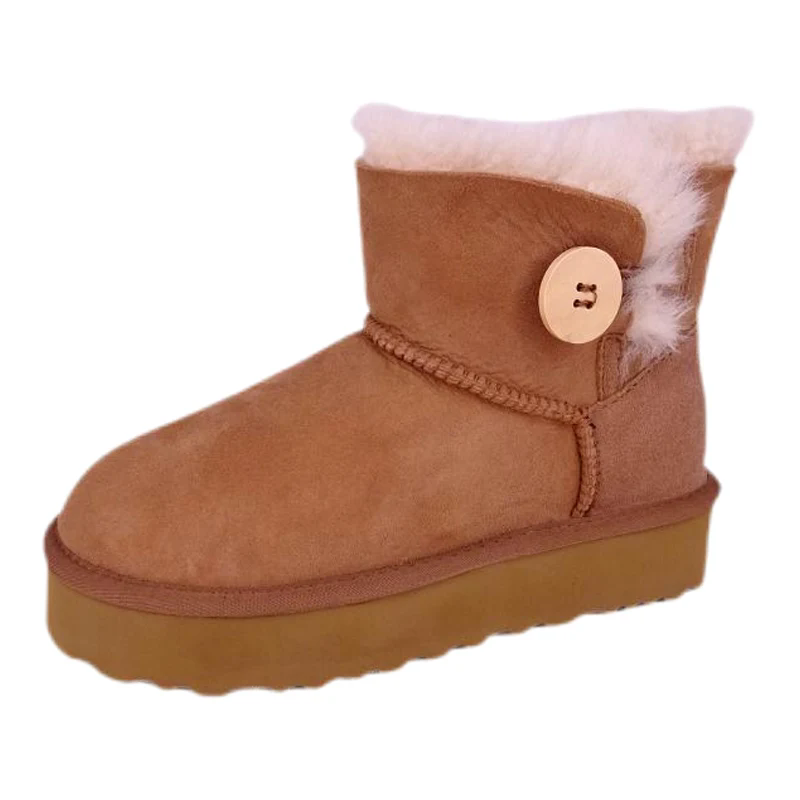Why Are Snow Boots Essential for Winter and How Do They Keep Your Feet Warm and Safe?
2025-02-27
As winter weather sets in, snow boots become a critical part of your wardrobe, offering protection, warmth, and comfort when navigating through snow, ice, and freezing temperatures. But why exactly are snow boots so essential during winter months, and how do they manage to keep your feet safe and warm in the harshest of conditions? In this blog, we’ll explore the key features that make snow boots so effective, the different types available, and why investing in a quality pair is crucial for your winter adventures.
What Makes Snow Boots Different from Regular Boots?
While regular footwear may provide comfort and style, they aren’t designed to handle the challenges posed by snowy, cold environments. Snow boots, on the other hand, are specifically engineered to withstand harsh winter conditions. These boots are built with extra insulation, waterproofing, and slip-resistant soles to ensure that your feet stay dry, warm, and protected. Here are a few key features that set snow boots apart from regular shoes:
1. Waterproofing and Moisture Control
One of the most important features of snow boots is their ability to keep your feet dry. Snow and ice can melt into water, causing your feet to become soggy and cold. Most snow boots come with waterproof materials like Gore-Tex or rubber, creating a barrier that prevents water from seeping in. Additionally, many snow boots have moisture-wicking linings to help keep sweat from accumulating, which is equally important in preventing cold, clammy feet.
2. Insulation
Insulation is a crucial aspect of snow boots, as it helps to retain body heat and prevent your feet from freezing in sub-zero temperatures. Most snow boots are lined with warm materials such as Thinsulate or fleece, which trap heat while still allowing moisture to escape. The thickness and type of insulation used vary, with some boots providing more warmth for extremely cold climates, while others are designed for milder winter conditions.
3. Slip-Resistant Soles
Walking on snow and ice can be dangerous without the right footwear. Snow boots feature soles with deep treads or specialized patterns that provide excellent traction on slippery surfaces. This reduces the risk of slipping and falling, which is especially important when you are walking on frozen sidewalks or snowy trails. Many snow boots also feature a rubber or thermoplastic polyurethane (TPU) outsole for extra grip.
4. Height and Protection
Snow boots are typically taller than regular boots, offering additional coverage and protection. The extended height helps prevent snow from entering the boots when walking through deep snow. It also provides support to your ankles and calves, which can be helpful for stability, especially when trekking through uneven terrain or during active winter sports like snowshoeing or skiing.
5. Comfort and Fit
Winter activities often involve long hours of walking, hiking, or playing in the snow. Snow boots are designed for comfort, with cushioned insoles and ergonomic shapes that support your feet during extended periods of wear. Many snow boots also feature adjustable closures, like velcro straps or drawstrings, to ensure a snug and secure fit that prevents the boots from loosening or slipping during use.
When Do You Need Snow Boots?
Snow boots are essential for anyone living in or visiting regions where winter brings snow, sleet, and freezing rain. They are designed for use during the colder months, offering superior performance in snowstorms, icy conditions, and wet environments. Here are some instances when you should consider wearing snow boots:
1. Snowstorms and Heavy Snowfall
During heavy snowstorms, it’s essential to have footwear that will keep your feet dry and insulated from the cold. Snow boots provide protection against wet, slushy conditions and help you navigate through deep snow without risking frostbite or hypothermia.
2. Outdoor Winter Activities
If you enjoy winter sports like skiing, snowboarding, snowshoeing, or hiking, snow boots are a must-have. These activities often require a lot of walking or standing in cold environments, and snow boots are designed to provide warmth, comfort, and support during such extended outdoor exposure.
3. Icy and Slippery Conditions
Even when snow begins to melt and turns into ice, snow boots can still be invaluable. With their slip-resistant soles, snow boots help you maintain your balance and avoid dangerous falls on icy sidewalks or roads.
4. Daily Winter Commute
For those who live in areas where snow and ice are common, snow boots are perfect for daily commutes. Whether you’re walking to work, running errands, or just taking a walk in the neighborhood, snow boots will keep your feet warm, dry, and safe during the winter months.
How to Choose the Right Snow Boots
When selecting snow boots, there are a few factors to consider to ensure that you get the best pair for your needs:
1. Climate and Temperature
- For extreme cold conditions, look for boots with high insulation ratings, such as those with Thinsulate or similar materials. These boots are typically designed to keep your feet warm in temperatures as low as -40°F (-40°C).
- For milder winters, you may opt for boots with less insulation or a more breathable lining to avoid overheating.
2. Activity Level
- If you plan to engage in active winter sports or long hikes, prioritize boots with good ankle support, cushioning, and flexibility.
- For daily commuting or casual use, boots with moderate insulation and waterproofing will typically suffice.
3. Material and Durability
- Snow boots made with durable materials like leather or synthetic uppers provide longevity and resistance to wear and tear. Look for boots with reinforced toes and heels to ensure they last through the winter season.
4. Fit and Comfort
- Make sure the boots are comfortable and fit well. You don’t want boots that are too tight, as they may restrict blood circulation, or too loose, which can lead to instability and discomfort. Try them on with winter socks to get the best fit.
Conclusion
Snow boots are an essential winter accessory, offering warmth, protection, and comfort when you need it most. Whether you’re trekking through deep snow, engaging in winter sports, or simply walking through your snowy neighborhood, snow boots help ensure that your feet stay dry, warm, and safe. By understanding their key features and choosing the right pair for your winter activities, you can enjoy the colder months with confidence, knowing that your feet are well-protected.



